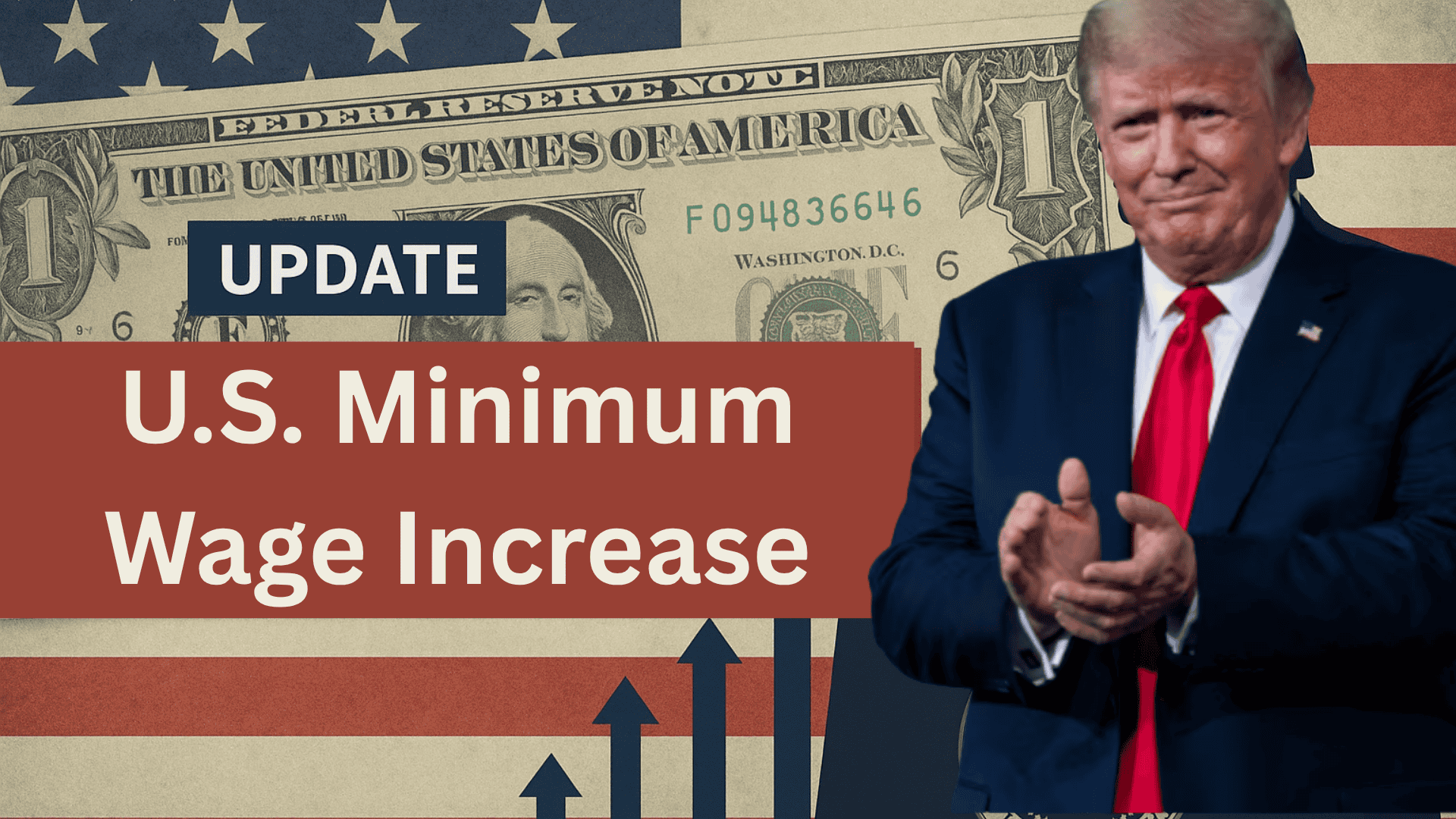As 2025 progresses, wage policies across the United States are seeing important updates designed to help workers keep pace with rising living costs. The latest changes according to the U.S. Minimum Wage Increase 2025 are now taking effect this November, impacting millions of employees nationwide.
U.S. Minimum Wage Increase 2025
The federal minimum wage has remained unchanged at $7.25 per hour since 2009, but several states and local governments have implemented their own increases effective November 2025. These changes aim to improve workers’ purchasing power and reduce the effects of inflation that have impacted households over the last few years.
While there is still no new federal increase enacted by Congress, over 25 states have independently raised their minimum wage rates this year. These adjustments are part of scheduled annual updates or new labor laws designed to ensure fair compensation for workers across multiple industries.
Updated Minimum Wage Rates by State
The following table highlights a few examples of new hourly pay rates effective in November 2025:
| State | New Minimum Wage (Hourly) | Previous Rate | Effective Date |
|---|---|---|---|
| California | $17.00 | $16.00 | Nov 1, 2025 |
| New York | $16.00 (NYC, Long Island, Westchester) | $15.00 | Nov 1, 2025 |
| Washington | $17.25 | $16.28 | Nov 1, 2025 |
| Illinois | $15.50 | $15.00 | Nov 1, 2025 |
| Florida | $13.00 | $12.00 | Nov 1, 2025 |
Many other states, including Oregon, Massachusetts, and Colorado, have scheduled automatic wage adjustments tied to inflation.

These indexed increases ensure that workers’ earnings keep up with rising prices of essential goods and services.
Why the Wage Hike Matters
The wage increase is a significant move for low- and middle-income workers who have faced stagnant wages despite higher living costs. Industries such as retail, hospitality, and healthcare—where hourly pay is common—will see the most direct impact.
According to recent labor data, the new rates are expected to benefit over 10 million workers nationwide. These changes not only improve individual financial stability but also strengthen local economies through increased spending power.
How Employers Are Responding
Employers in states with wage increases have started adjusting their payroll systems to reflect new pay rates. While some small businesses express concern about higher labor costs, others see the change as an opportunity to attract and retain employees in a competitive job market.
In sectors facing worker shortages, especially in hospitality and logistics, higher wages could improve job satisfaction and reduce turnover. Many companies are also adopting flexible scheduling and additional benefits to support overall worker wellbeing.
Federal Discussions and Future Changes
While the federal minimum wage remains at $7.25 per hour, national discussions about increasing it are ongoing. Lawmakers continue to debate proposals to raise the federal standard to $15 per hour, though no final legislation has been passed.
If approved in the future, the new federal rate would phase in gradually, allowing employers time to adapt. Until then, state-level initiatives continue to play the most active role in raising minimum pay standards across the country.
What Workers Should Do
Employees should verify the new wage rates applicable in their state and ensure their paychecks reflect the changes starting from November 2025. Workers who are not receiving the mandated minimum wage can file complaints with their state’s Department of Labor or the U.S. Wage and Hour Division.
It’s also advisable to review local ordinances, as some cities and counties—like Seattle, Los Angeles, and New York City—have higher minimum wage rates than the state average.
The Broader Economic Impact
The minimum wage increases come at a crucial time when inflation has affected essential spending categories such as food, housing, and healthcare. By raising base pay, states aim to support economic stability and reduce dependency on social assistance programs.
While some economists warn that rapid wage hikes could increase prices in certain sectors, most experts agree that moderate, gradual increases improve overall productivity and worker morale without significant inflationary pressure.
The November 2025 minimum wage adjustments mark a step forward for fair compensation and economic resilience. They ensure that millions of workers earn wages more aligned with modern living expenses and help foster stronger, more equitable communities.
Thank you for reading and staying informed about the latest national wage updates.





